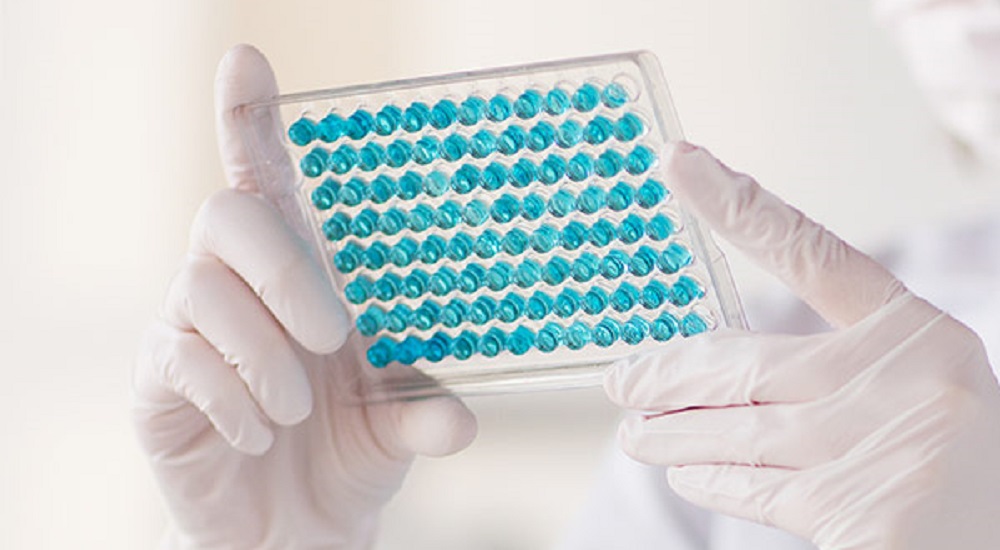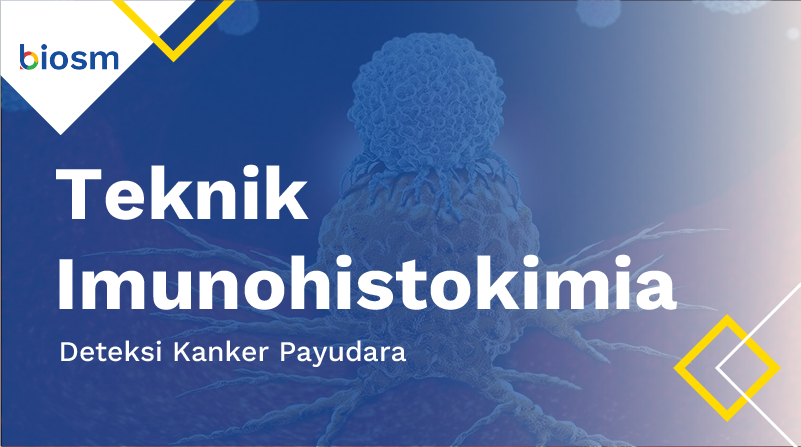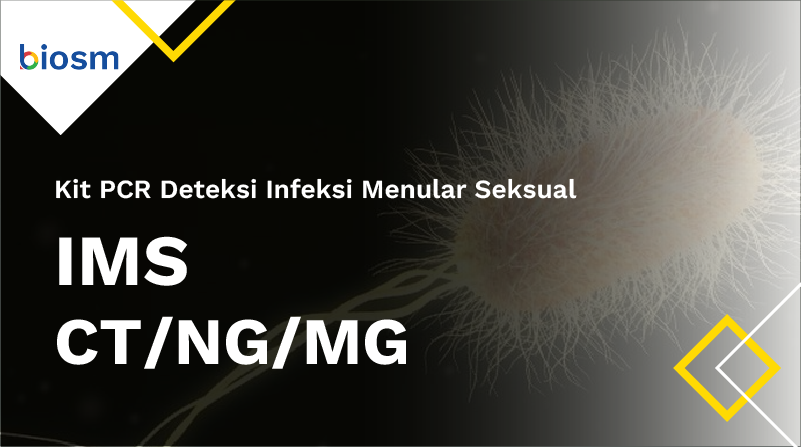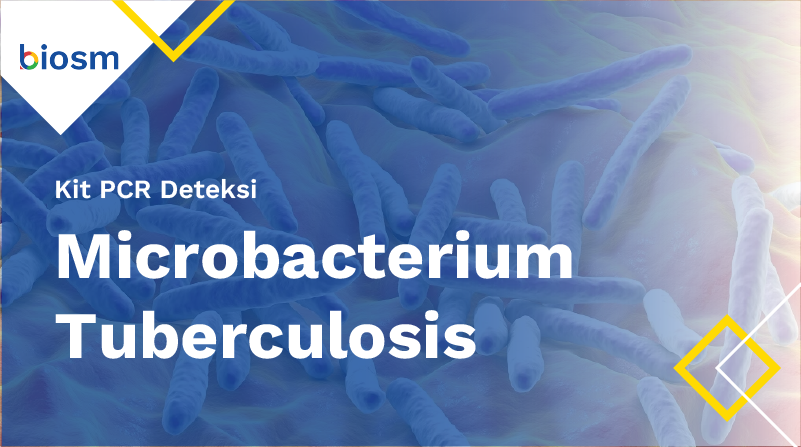Apa itu PNA?
Pertama kali ditemukan oleh Profesor Nielsen, Egholm, Berg dan Buchardt dari University of Copenhagen, Denmark pada tahun 1991.
PNA merupakan kepanjangan dari Peptide Nucleic Acid, merupakan sebuah analog DNA yang dibuat secara artifisial.
PNA memiliki struktur di mana gugus fosfat-ribosa dari DNA disubstitusi dengan gugus amida seperti peptida (N- (2-aminoetil) glisin). Jadi afinitas pengikatan dan stabilitas pada DNA target atau RNA sangat meningkat. Meskipun terjadi perubahan struktural pada gugus tersebut, PNA dapat digunakan dalam berbagai aplikasi di mana DNA dapat digunakan karena dapat membuat ikatan komplementer dengan urutan target seperti halnya DNA.
FEATURES & ADVANTAGES
- High binding affinity
PNA has electrically neutral amide backbone. There is no repulsion between the PNA strand and the DNA strand, and PNA has the stronger binding affinity for the target DNA.
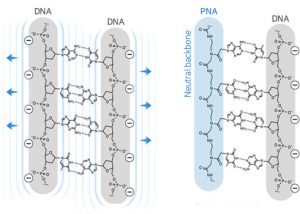
- High specificity and sensitivity
The difference in binding affinity between perfect match andmismatch of PNA/DNA strands is bigger than DNA/DNA strands. It is easy to discriminate even single nucleotide mismatched sequence.
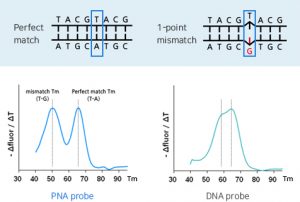
- Chemical/Biological/thermal stability
PNA is quite stable under high temperature or high pH condition. Also, PNA backbone is completely different from DNA’s or RNA’s andis similar to but slightly different from the peptide backbone.So, PNA is stable against enzymes as nuclease or protease.
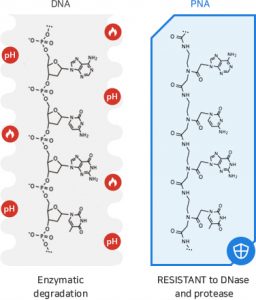
- Independence against salt in hybridization
PNA has stable and strong binding affinity due to itsindependence against high salt concentration in hybridization.
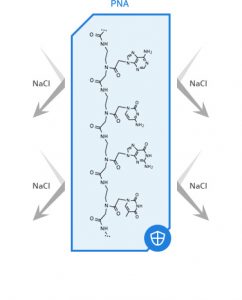
PNA VS DNA
| Feature | PNA | DNA |
|---|---|---|
| Binding Affinity | At Least 1°C Higher Tm per Base | – |
| Hybridization rate | 100-5000 Times Faster | – |
| Salt concentration in hybridization | Independent | Dependent |
| ΔTm for single nucleotide mismatch | <10°C | <15°C |
| ChemicalStability | Stable | Unstable in Acidic or Basic condition |
| BiologicalStability | Enzyme-Resistant | Degradable by Nuclease |
| Solubility | Moderate(but can be improved by simple modification) | Good |
| General Probe Length | 13-18mer | 25-30mer |
PANAGENE’s PNA
PANAGENE has developed its proprietary Bts PNA monomers (Bts; benzothiazole-2-sulfonyl group) and PNA oligo synthesis method using Bts monomers, and has supplied high quality PNA oligos.
Bts group of the Bts PNA monomers not only protects the amine group (NH2) of the monomer but also is self-activated. So, oligo synthesis using Bts monomers does not require a pre-activation step or many coupling reagents. Unlike the conventional synthesis method (using Fmoc PNA monomers), the side reactions such as transacylation which occur during the deprotection process are minimized and mass production of high purity PNA oligo can be achieved at low cost. In addition, it is more economical because it is possible to recover and reuse excess Bts monomers which remains after the coupling reaction.
- Chemical Structure of Bts PNA monomer & oligomerization cycle
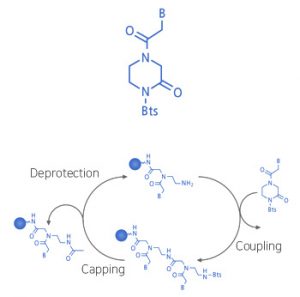
[Reference]
Hyunil Lee et al. 2007. Peptide Nucleic Acid Synthesis by Novel Amide Formation. Org. Lett. 9 (17), 3291-3293.
- Bts vs. Fmoc
| Type | Bts monomer | Fmoc monomer |
|---|---|---|
| Coupling reagent | Not necessary | HATU |
| Mass production | Easy | Difficult |
| Side reaction | <1% | Hard to control(5~10%) |
| Purification | Easy | Difficult |
| Yield | >80% | <40% |
| Cost of synthesis | Low | High |
Fmoc monomer 
Informasi lebih lanjut Kunjungi Website kami di www.biosm-indonesia.com
contact : marketing@biosm-indonesia.com
Baca juga

